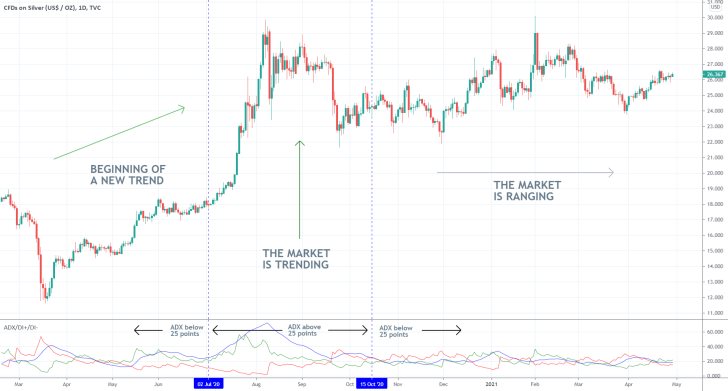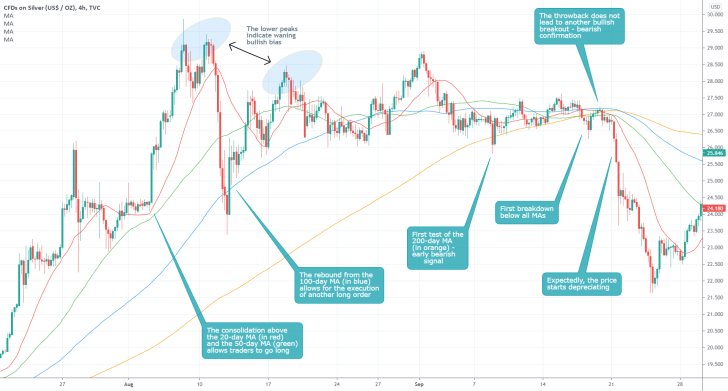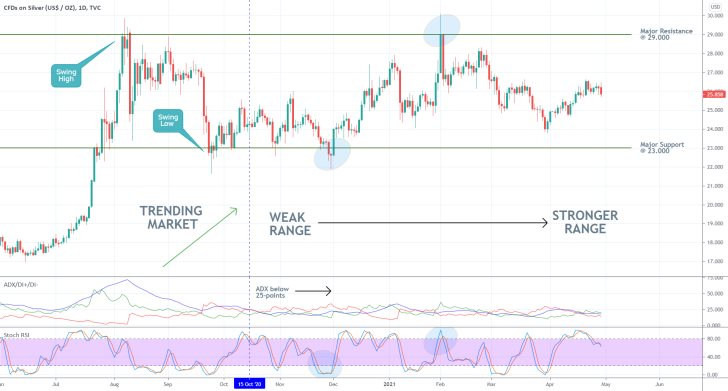
One of the most commonly asked questions by novice traders is "what indicators should I use?" which is unsurprising given the vast array of available tools on a typical trading platform. Some traders prefer to crowd their charts with all sorts of indicators, whereas others prefer a more minimalistic approach.
While there is no perfect solution, one thing should be abundantly clear- the indicators you select should help you make sense of the price action rather than distract you. When it comes to the number of indicators one should use, the more does not necessarily mean the better.
In order to narrow down your options, you can use the following guidelines we have compiled for you so that you can diversify your options depending on the underlying market sentiment.
These steps should not be perceived as a roadmap to the Holy Grail of trading but rather as a helpful benchmark for determining what kind of instruments are best-fitted for different types of market environments.
Is the market trending or ranging?
The first thing that needs to be determined is what the underlying sentiment is - is the market trending or range-trading. While a keen eye can catch the subtle difference between the two without the use of any indicators, the ADX (Average Directional Index) can be used to determine the strength of the trend.
Whenever the ADX is threading above the 25-point benchmark, this underpins a robust trending environment. Conversely, a reading of the index below this threshold indicates undetermined (ranging) market sentiment.

Once the underlying environment is determined, you can then draw the primary support and resistance levels. Those indicate the major pressure points on the chart that could elucidate future breakouts, breakdowns, rebounds and reversals.
If the market is trending, focus on the underlying momentum
Price trends are by definition probing either lower or higher, which is why you need to track their changing strength as they develop. This is crucial for the implementation of trend-continuation or trend-reversal strategies.
Filling the chart with multiple moving averages with different periods does a perfect job of underlining the changing market bias over time. That is so because MAs can be used as floating supports and resistances, and the behaviour of the price action each time it probes a given MA highlights the changing nature of the trend.
The inability of the price to break down below one or several MAs in an uptrend can be perceived as an indication of persisting bullish commitment in the market. Hence, traders can use trend-continuation trading strategies and place long orders while the price probes the MAs. The opposite is true for downtrends.

The eventual probing and subsequent penetration of the price above (in uptrends) or below (in downtrends) MAs with higher periods signifies waning commitment in the market.
The gradual narrowing down of the space between various MAs followed by an eventual breakout/down underpins the possibility for using trend-reversal strategies. Also, keep in mind that MAs with higher periods are usually found at the bottom of the string in uptrends and on top of the bundle in downtrends.
If the market is ranging, bet on the Stochastic RSI
In ranging markets, in contrast, there is little need for moving averages, as the price action is naturally contained within a horizontal area. Instead of focusing on the direction of the price action, in this case, it makes more sense to study the discrepancies in the underlying buying and selling pressures.
The Stochastic RSI is among the best-fitted indicators to do this job, which is why it is most effective in strong ranging environments. It can be used to gauge the likely rebounds of the price action within the two extremes of the underlying price range.

If the ADX has been threading below the 25-point benchmark for quite a while and the Stochastic RSI is getting into one of its two extremes (overbought and oversold), this can be perceived by traders as a potential indication of imminent reversals in the direction of the price action.
This strategy works best if the most prominent support and resistance levels have already been plotted on the chart.
Ultimately, it makes the most sense to choose indicators that best fit your trading style rather than trying to reshape your approach to fit a particular indicator. Think of them as a means to an end when examining the price action of a given asset.




















